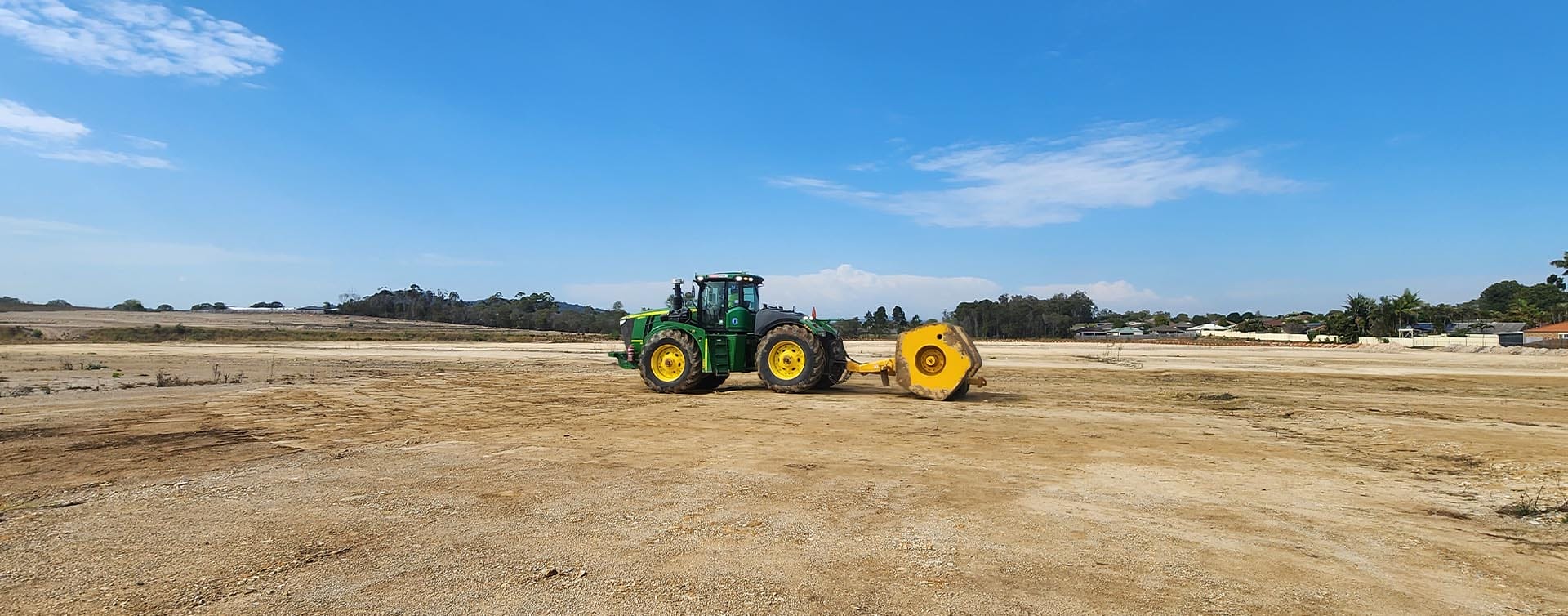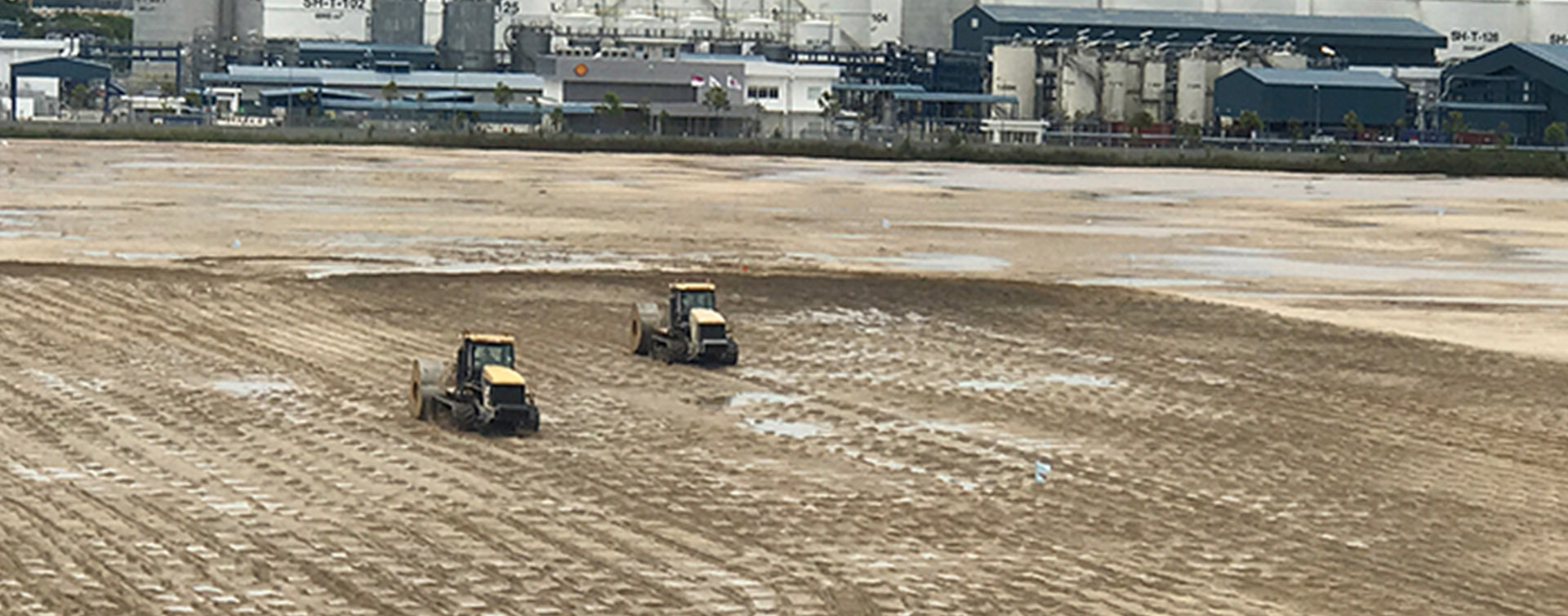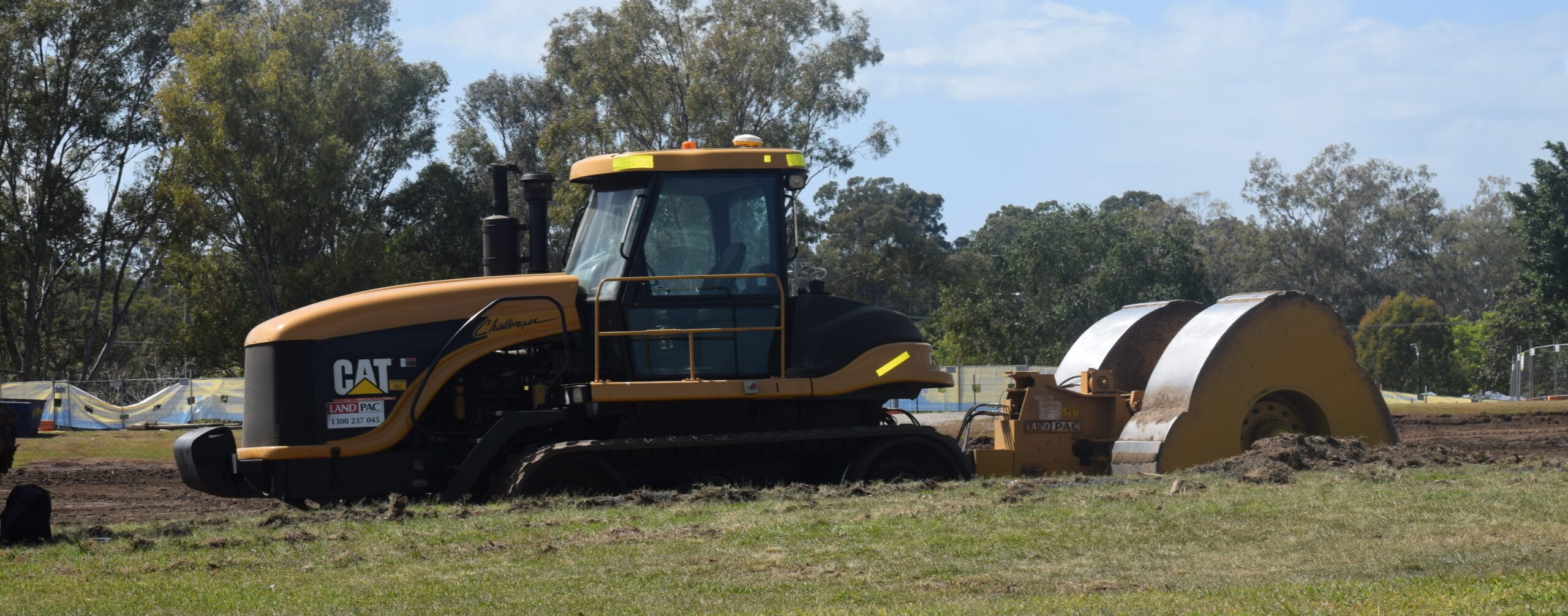Commercial and Industrial Construction with HEIC
Building the Foundations of Commerce and Industry
The Commercial and Industrial Building Construction industry is an engine of growth, shaping the spaces where business thrives – from offices and shopping centers to factories and warehouses. Over the past five years, the industry has witnessed an upswing, with revenues soaring to $52.5 billion. At the heart of this growth is the need for innovative construction methods that can keep pace with the sector’s dynamics, ensuring projects are completed on time and within budget. Landpac’s High Energy Impact Compaction (HEIC) is at the vanguard, offering a groundbreaking solution to meet the industry’s burgeoning demands.

A Strategic Advantage in Building Construction
HEIC is more than just a method; it’s a transformative approach that Landpac has refined to enhance the engineering properties of the soil. The process involves administering controlled, high-energy impacts to the soil, significantly increasing its density. This results in a stable, robust foundation essential for non-residential buildings that require a high load-bearing capacity due to their size and the heavy traffic they accommodate.
The Role of HEIC in Commercial and Industrial Spaces
In commercial and industrial construction, the stakes are high. The foundation is not merely a base; it’s a critical investment in the future safety and functionality of the building. HEIC provides a resilient substructure for offices, retail complexes, and entertainment venues like cinemas and restaurants. For more demanding constructions such as airport terminals and warehouses, where the soil must support immense structures and machinery, HEIC’s ability to improve load-bearing capacity becomes invaluable.
Time and Cost Efficiency with HEIC
Time is money, especially in construction. Traditional soil compaction methods can be time-consuming and less effective, leading to delays and increased costs. Landpac’s HEIC technology stands out for its efficiency, compacting larger areas to greater depths with fewer passes. This not only speeds up the construction process but also translates to significant cost savings, a benefit that resonates strongly with clients looking to maximise their investment.
The Landpac Edge
Landpac takes compaction a step further by incorporating intelligent compaction measurement technologies. This sophisticated system, which includes the Völkel method, provides operators with real-time data on the compaction process, enabling precise, consistent soil compaction. It’s a smart way to avoid over or under compaction, ensuring optimal ground stability that will stand the test of time.
Environmental Sustainability and HEIC
In an age where sustainability is a priority, HEIC presents an environmentally friendly alternative. By optimising soil on-site, the need for additional fill materials is significantly reduced, along with the carbon footprint associated with their transport. Landpac’s commitment to eco-friendly practices through HEIC is not just about meeting today’s standards but setting new benchmarks for the future.
How Landpac's HEIC Elevates the Commercial and Industrial Building Construction Industry
The Commercial and Industrial Building Construction industry is a testament to human ingenuity and economic vitality. With the strategic implementation of Landpac’s HEIC, the industry is poised to continue its growth trajectory, supported by solid foundations that save time, reduce costs, and prioritize environmental stewardship. Landpac isn’t just constructing buildings; it’s crafting the bedrock of industry and commerce for a brighter, more sustainable future.
Quality, from start to finish
Landpac only uses world-class innovative methods and equipment which has been proven over decades to tick all the boxes for certifying engineers. Get in touch to learn more.
Latest news

Understanding High Energy Impact Compaction (HEIC)
High Energy Impact Compaction (HEIC) revolutionises ground improvement with its ability to achieve superior soil density and stability. Unlike traditional methods, HEIC uses advanced rollers and compaction technology to penetrate deeper soil layers.

Laying the Foundation: Why ground improvement engineering matters
Ground improvement enhances soil stability and strength, reducing risks and costs in construction. Techniques like HEIC ensure efficient, sustainable solutions for safer infrastructure.

HEIC’s Role in Sustainable Construction Practices
HEIC boosts sustainable construction by stabilising soil, cutting environmental impact, and reusing existing land. It’s a fast, efficient way to build stronger, longer-lasting infrastructure while protecting the environment.
